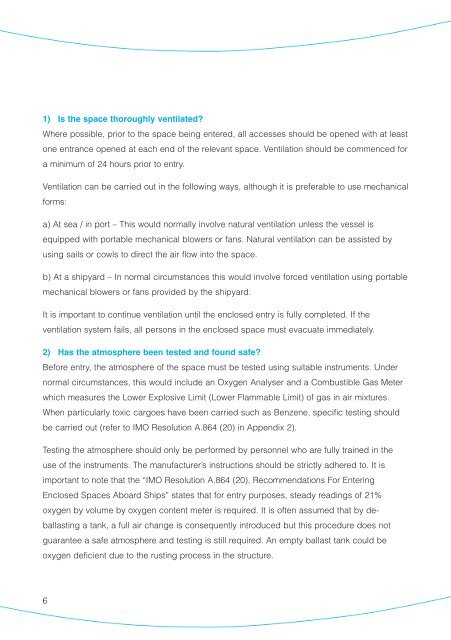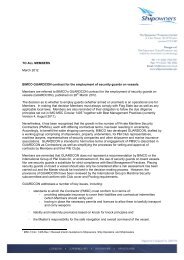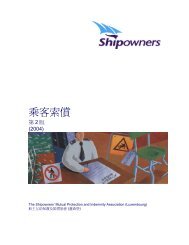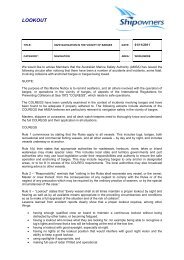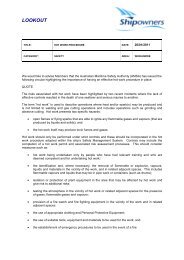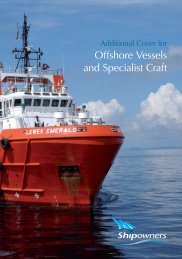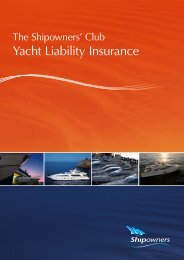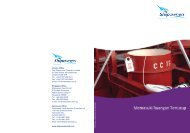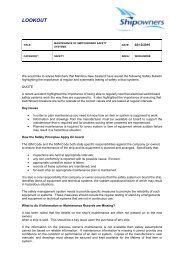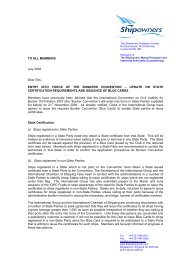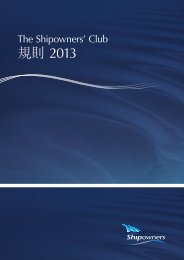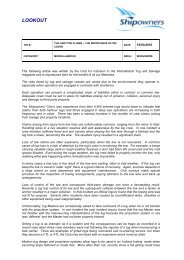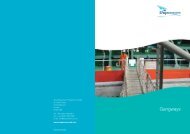Enclosed Space Entry - Shipowners
Enclosed Space Entry - Shipowners
Enclosed Space Entry - Shipowners
You also want an ePaper? Increase the reach of your titles
YUMPU automatically turns print PDFs into web optimized ePapers that Google loves.
1) Is the space thoroughly ventilated?<br />
Where possible, prior to the space being entered, all accesses should be opened with at least<br />
one entrance opened at each end of the relevant space. Ventilation should be commenced for<br />
a minimum of 24 hours prior to entry.<br />
Ventilation can be carried out in the following ways, although it is preferable to use mechanical<br />
forms:<br />
a) At sea / in port – This would normally involve natural ventilation unless the vessel is<br />
equipped with portable mechanical blowers or fans. Natural ventilation can be assisted by<br />
using sails or cowls to direct the air flow into the space.<br />
b) At a shipyard – In normal circumstances this would involve forced ventilation using portable<br />
mechanical blowers or fans provided by the shipyard.<br />
It is important to continue ventilation until the enclosed entry is fully completed. If the<br />
ventilation system fails, all persons in the enclosed space must evacuate immediately.<br />
2) Has the atmosphere been tested and found safe?<br />
Before entry, the atmosphere of the space must be tested using suitable instruments. Under<br />
normal circumstances, this would include an Oxygen Analyser and a Combustible Gas Meter<br />
which measures the Lower Explosive Limit (Lower Flammable Limit) of gas in air mixtures.<br />
When particularly toxic cargoes have been carried such as Benzene, specific testing should<br />
be carried out (refer to IMO Resolution A.864 (20) in Appendix 2).<br />
Testing the atmosphere should only be performed by personnel who are fully trained in the<br />
use of the instruments. The manufacturer’s instructions should be strictly adhered to. It is<br />
important to note that the “IMO Resolution A.864 (20), Recommendations For Entering<br />
<strong>Enclosed</strong> <strong>Space</strong>s Aboard Ships” states that for entry purposes, steady readings of 21%<br />
oxygen by volume by oxygen content meter is required. It is often assumed that by deballasting<br />
a tank, a full air change is consequently introduced but this procedure does not<br />
guarantee a safe atmosphere and testing is still required. An empty ballast tank could be<br />
oxygen deficient due to the rusting process in the structure.<br />
6


